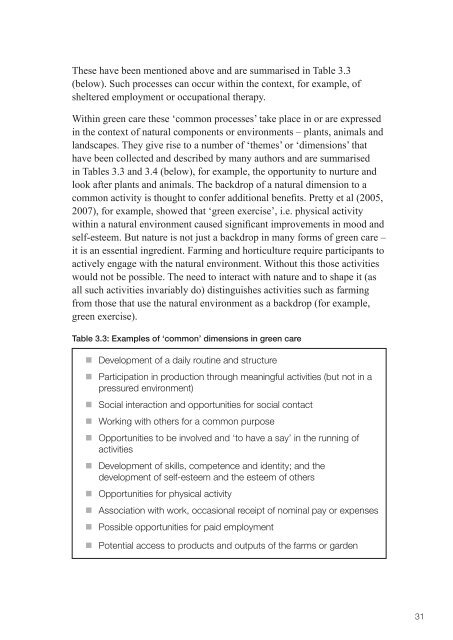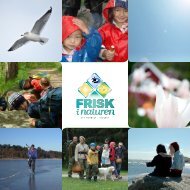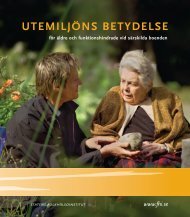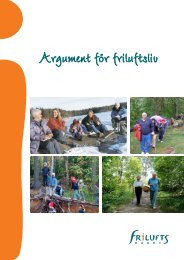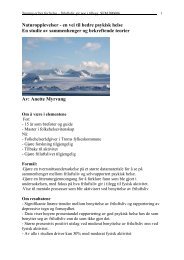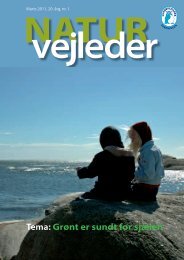Green Care: A Conceptual Framework - Frisk i naturen
Green Care: A Conceptual Framework - Frisk i naturen
Green Care: A Conceptual Framework - Frisk i naturen
Create successful ePaper yourself
Turn your PDF publications into a flip-book with our unique Google optimized e-Paper software.
These have been mentioned above and are summarised in Table 3.3<br />
(below). Such processes can occur within the context, for example, of<br />
sheltered employment or occupational therapy.<br />
Within green care these ‘common processes’ take place in or are expressed<br />
in the context of natural components or environments – plants, animals and<br />
landscapes. They give rise to a number of ‘themes’ or ‘dimensions’ that<br />
have been collected and described by many authors and are summarised<br />
in Tables 3.3 and 3.4 (below), for example, the opportunity to nurture and<br />
look after plants and animals. The backdrop of a natural dimension to a<br />
common activity is thought to confer additional benefits. Pretty et al (2005,<br />
2007), for example, showed that ‘green exercise’, i.e. physical activity<br />
within a natural environment caused significant improvements in mood and<br />
self-esteem. But nature is not just a backdrop in many forms of green care –<br />
it is an essential ingredient. Farming and horticulture require participants to<br />
actively engage with the natural environment. Without this those activities<br />
would not be possible. The need to interact with nature and to shape it (as<br />
all such activities invariably do) distinguishes activities such as farming<br />
from those that use the natural environment as a backdrop (for example,<br />
green exercise).<br />
Table 3.3: Examples of ‘common’ dimensions in green care<br />
n Development of a daily routine and structure<br />
n Participation in production through meaningful activities (but not in a<br />
pressured environment)<br />
n Social interaction and opportunities for social contact<br />
n Working with others for a common purpose<br />
n Opportunities to be involved and ‘to have a say’ in the running of<br />
activities<br />
n Development of skills, competence and identity; and the<br />
development of self-esteem and the esteem of others<br />
n Opportunities for physical activity<br />
n Association with work, occasional receipt of nominal pay or expenses<br />
n Possible opportunities for paid employment<br />
n Potential access to products and outputs of the farms or garden<br />
31


